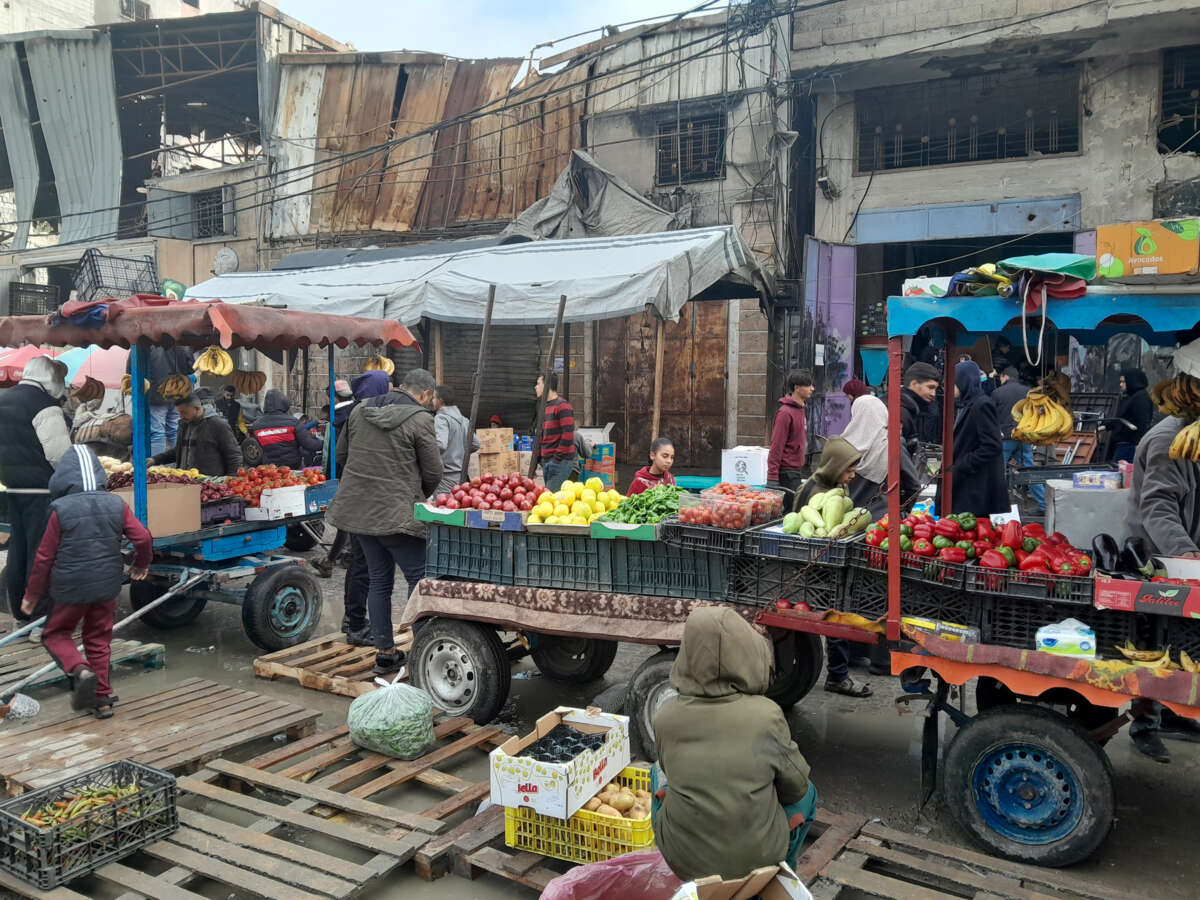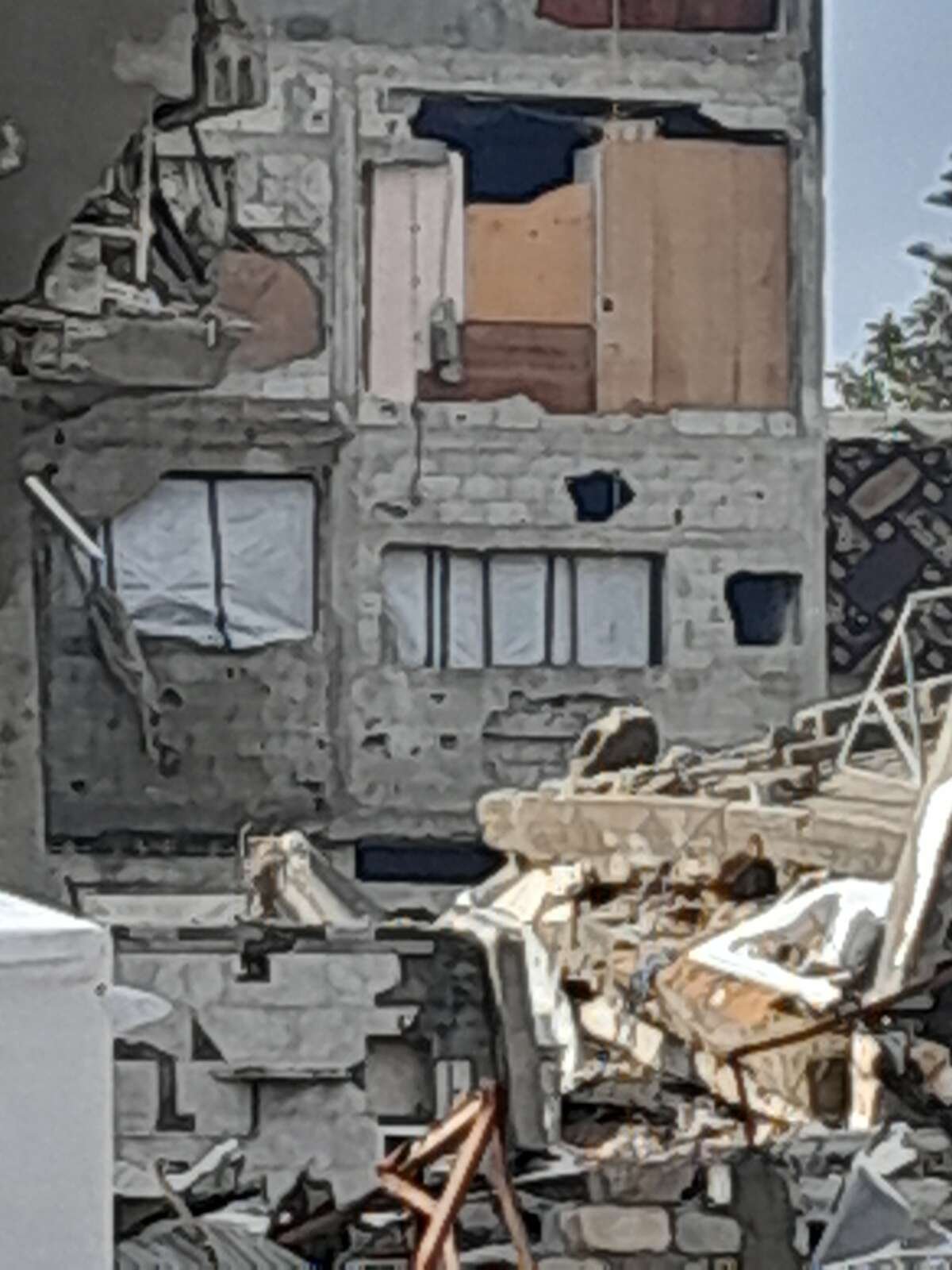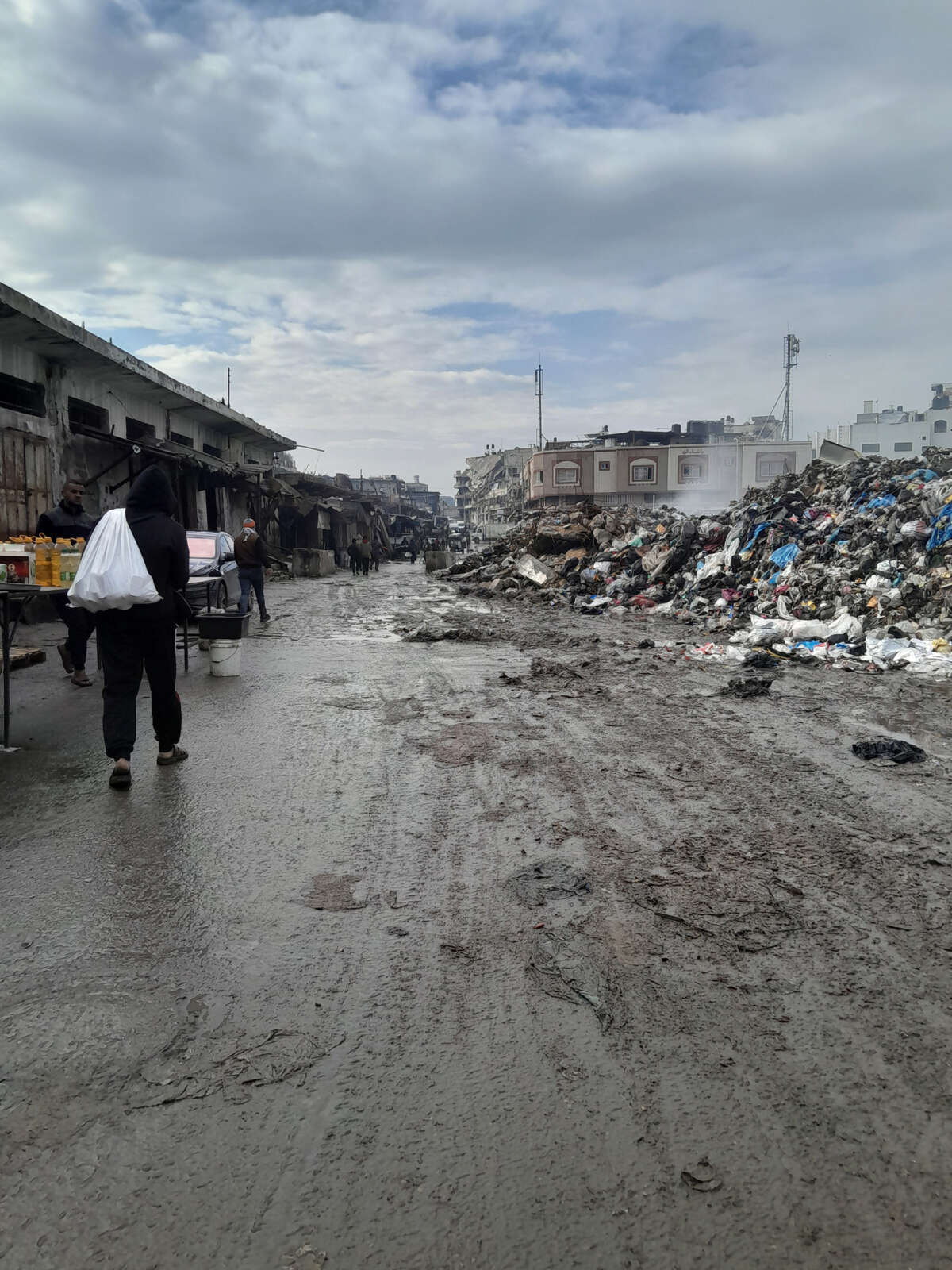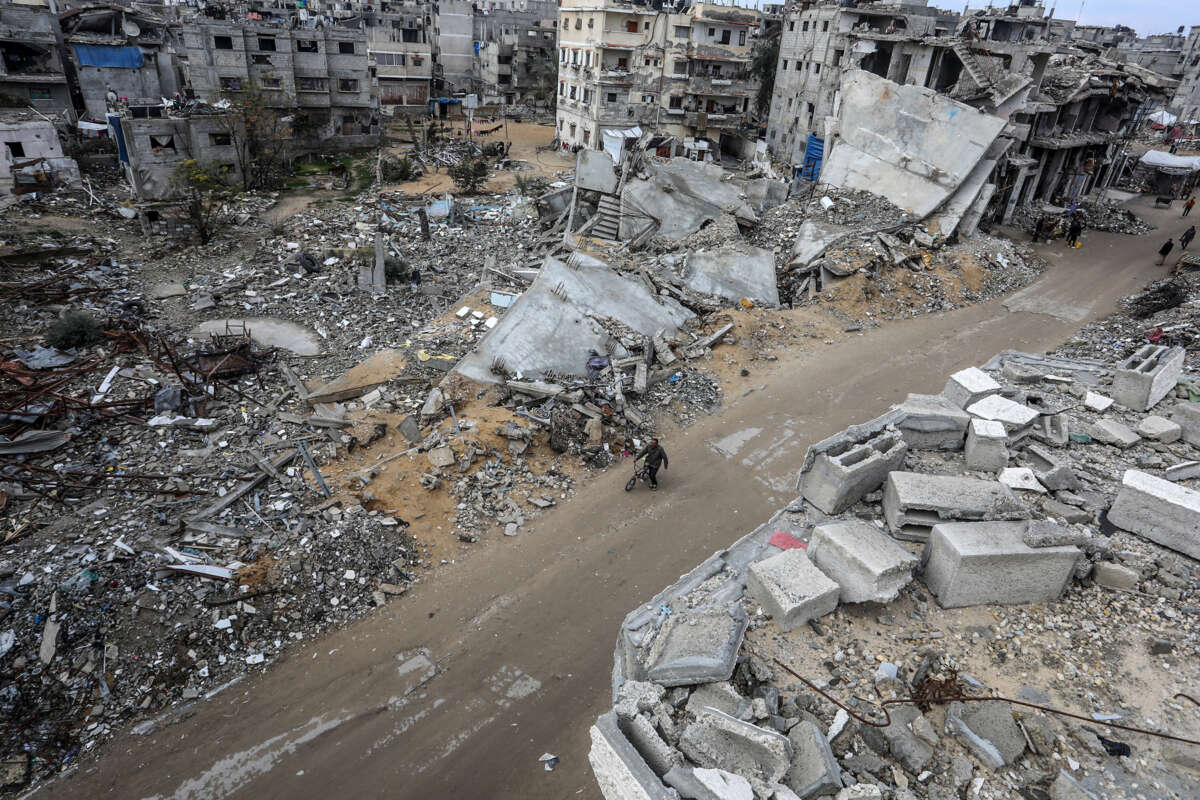Part of the Series
Struggle and Solidarity: Writing Toward Palestinian Liberation
As the ceasefire in Gaza marks its fourth week and evacuees return to the north, many believe Gazans’ suffering has ended. This is far from reality.
However, I truly believe that the ceasefire is crucial. It has allowed families to reunite after lengthy separation. I had the chance to see my aunt and uncle, who were forced to evacuate to the south in the early days of the war. Even now, it feels surreal to have them back with me.
Additionally, the ceasefire has allowed humanitarian aid and goods to enter the Gaza Strip. Markets are now stocked with food we had been deprived of for so long — chicken, fruits, vegetables, and even chips and candy. For nearly a year, these were just distant dreams as starvation spread, and we lived on little more than bread and canned food, offering minimal nutrition. Now, for the first time, we can gather around the table to eat for enjoyment, not just to survive.

Yet, despite alleviating some suffering, the ceasefire alone cannot undo the immense devastation inflicted on Gaza. Since the war began, the Israeli occupation has systematically worked to destroy the Strip — especially the north — by bombing entire neighborhoods, demolishing infrastructure, targeting water wells, dismantling roads, and cutting electricity and communication lines. Gaza has been pushed back to the Stone Age, reduced to a landscape of rubble and ruin.
My neighborhood, al-Zaytun — one of the largest and most populated neighborhoods in the north — witnessed relentless bombardment and continuous military invasions. In November 2024, when Israeli forces decided to expand the Netzarim Corridor, which my neighborhood surrounds, most residents were forced to evacuate. My neighborhood then became a staging ground for troops securing the corridor. The situation became extremely dangerous, and reaching the neighborhood was almost impossible. If anyone tried to go there, they would almost certainly be killed.
During the ceasefire, people were finally able to reach it. My neighbors, eager to see their beloved neighborhood after months of displacement in the south, were devastated by the scale of destruction. The once-vibrant area, known for its olive trees and beautiful homes, was unrecognizable. Houses were either completely destroyed, partially ruined or burned beyond repair — none remained intact.
This devastation was not limited to my neighborhood; most areas in the north — including Beit Hanoon, Jabalia and Beit Lahiya — suffered the same fate. For a moment, many in Gaza believed that returning to the north might end their suffering, but they soon discovered that it had been reduced to a wasteland. Instead of finding solace, they found themselves trapped in another war — a war of survival, where any sense of life had ceased to exist.
The struggle for water has become one of our greatest challenges.
With nowhere else to go, those who lost their homes pitched tents — previously used in the south — over the rubble of their homes. These flimsy shelters offered no relief from the scorching summer heat or the bitter winter cold. Some started searching for available rooms in schools for shelter, but even that proved challenging, as most schools in the north were overcrowded — with sometimes three or four families sharing one classroom under deteriorating conditions.

My family and I were among those who lost their homes, but fortunately, we secured a small apartment in another neighborhood called al-Tuffah. I assume that if we did not have this place, we would have been forced, with no alternative, to live either in a tent or in a classroom — if we had managed to find one.
Those whose homes were burned or partially destroyed wasted no time trying to make them livable again. For them, anything was better than life in a tent. My neighbor, Abu Omar, saw his house hit by three artillery shells, which demolished most of the exterior walls, leaving the interior exposed to the street. He tried to rebuild, but the cost of construction materials in Gaza is expensive. A single bag of cement costs $200, so he had to resort to makeshift repairs using plastic sheets and iron bars to close the gaps.
Similarly, my neighbor Um Rasad’s home was completely burned during the first Israeli invasion of the neighborhood. The fire left the walls weakened and on the verge of collapse. Still, she had no choice but to scrub away the blackened ash and continue living there. For her, even a damaged home is a blessing — a place that offers her and her children some shelter from the streets.

Beyond the destruction of homes, the lack of basic services has made daily life in the north even more unbearable. The struggle for water has become one of our greatest challenges. The Israeli occupation destroyed most of the water wells, leaving people desperate for any source of clean water. Some charity organizations have begun delivering water trucks to the devastated areas in the north, but they do not arrive daily or on a predictable schedule, and the supply is often insufficient. As a result, many residents are unable to fill their water containers and are forced to walk long distances to secure water for drinking and daily use.
Charging devices has also become incredibly difficult. Most solar panels — the only source of power — have been destroyed in the war, and the few that remain are damaged, significantly reducing their efficiency. The high cost of solar equipment further compounds the issue. A single 600-watt solar panel costs up to $1,000, making it nearly impossible for most families to access a reliable source of electricity.
Mobile phone signals and internet services are weak and scarce in most areas. Transportation is nearly nonexistent, and when available, it’s prohibitively expensive. As a result, we are forced to walk a long distance to reach al-Sahaba Street in the heart of Gaza City to access a reliable connection.
Sanitation services are almost nonexistent, leaving piles of garbage to accumulate in the streets. With no other way to dispose of waste, people are forced to burn it. Sewage flows through the damaged roads, as the infrastructure is completely destroyed. The air is filled with the foul smell of sewage and the harsh fumes of burning trash. This poses serious health risks, including respiratory problems.
The challenges we face in Gaza are overwhelming. Our hopes for recovery are rooted in the urgency of rebuilding — not just the physical structures, but the lives of the people who have endured so much. We need the international community to commit to rebuilding Gaza’s infrastructure, supporting the people who have lost everything and addressing the severe shortages of basic necessities. The road to recovery will be long, but with sustained efforts, we can begin to heal and rebuild what has been destroyed. Gaza’s resilience is unwavering, but it needs help to rise again.
Media that fights fascism
Truthout is funded almost entirely by readers — that’s why we can speak truth to power and cut against the mainstream narrative. But independent journalists at Truthout face mounting political repression under Trump.
We rely on your support to survive McCarthyist censorship. Please make a tax-deductible one-time or monthly donation.
